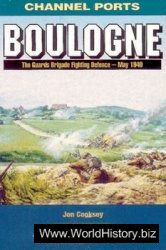Sporadic early European shipwrecked explorers and traders, Macassan trepangers, global whalers and sealers, as well as the great influx of post-1788 white colonists and pastoralists, missionaries, and convicts all encountered Australia’s earliest Aboriginal peoples. The rich archaeological evidence of these intercultural imprints continues to be recovered and studied, and indigenous Australians increasingly take ownership of these studies of their own recent past.
Traditional terminology uses Contact or Postcontact Archaeology to denote recent Aboriginal sites marked by a European-Aboriginal mix of artifacts, structures, and spatial patterning. Some excavation of Post-contact sites took place in the 1960s: first an Aboriginal midden adjacent to the Port Essington settlement, then the European-style government settlement built for Tasmanian Aborigines during their time at Wybalenna (1832-45) by G. A. Robinson ‘‘to house, Europeanize and Christianize’’ the Tasmanian Aborigines he had gathered around him. The mixed material culture found on floors and around these cottages demonstrated how Aboriginal use of, and interaction with, unfamiliar European items was more revealing than their presence alone. The 1990s excavation at Burghley investigated a European stock hut (c. 1827), used by Aborigines after its abandonment about 1836-37 until c. 1842, again with mixed material culture.
In more densely populated coastal Australia these sites are not common: one or two European items sometimes occur late in upper layers of Aboriginal rock-shelter deposits, while surface camp sites rarely survive. The story is different inland. With expansion into the interior from the 1860s, semi-permanent Aboriginal camps developed close to places of white settlement, such as missions, telegraph stations, police outposts, pastoral stations, and mining sites. The surface scatters that mark these camps have been studied at sites including Ooldea mission (1919-35) and Killalpaninna mission (1866-1920), the 1872 Overland Telegraph Stations such as Strangways and Charlotte Waters (cf. the 1990s Central Australia Archaeology Project), police camps at Boggy Hole (1889-91) and Illamurta Springs (1893-1912), Engoordina Station (1880-81) and Arltunga gold mining area (1888-1912). Most camps housed relatives of mission children, domestic employees, and Aboriginal stockmen, especially when bush food was sparse, since rations were often issued at these stations. Artifacts included recycled European tablewares, clothing, food cans, wire, bottle glass, and iron tools. More distant campsites too had European artifacts, but fewer. Traditional flaking is found on raw materials like ceramic insulators and glass bottles. Similar camp-sites are also found on explorer routes; explorers’ notes in their journals speak of rewards of iron hatchets and hoop iron to Aboriginal guides.
Documenting this oral history, especially where archaeological evidence survives, often has special relevance in that, in law, continuity of traditional land use and practices has to be demonstrated if Native Title is to be recognized.
Today the term ‘shared landscapes’ is sometimes preferred where pastoral leases and land grants mindlessly overran the visible camps, relics, and burials of the indigenous owners still in occupation. In current projects, Aboriginal communities have been increasingly working with field archaeologists to map places and record the associated oral memories so lacking in earlier formal white viewpoints of what happened. Collaboration with Aboriginal stockmen in Kimberley near Hall’s Creek, then with former pastoral communities in coastal northern NSW, mapped remembered places, camps, and artifacts, together with events, people, and values. Other recent examples illustrating the range of collaborative projects in the Post-contact field include Corranderk Mission Station (1863), Blacktown Native Institution (1821-29), Poonindie Mission (1850-96), Ebenezer Moravian Mission (1859-1904), and Peel Island Lazoret (1907-59).
Different forms of cultural interaction are to be seen along Australia’s north coast among those engaged in the pearling, trochus, and trepang activities from Cossack and Broome to Arnhem Land. The archaeological footprint of Macassan traders as they harvested trepang and smoked their catch on shore was the subject of early field work and study, and continues topically. Indigenous peoples of the Torres Strait Islands form a distinct cultural group and have a different history of interaction. Their maintenance of their traditional culture and complex trading networks within their sphere of interaction allowed them to remove the legal fiction that the settlement of the continent was anything other than an invasion.




 World History
World History









